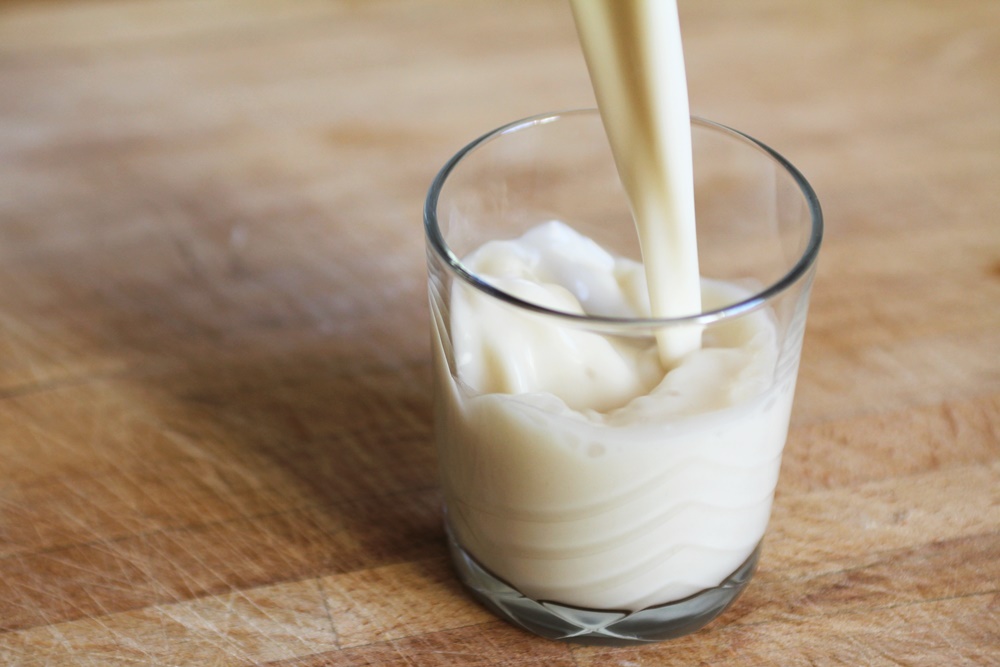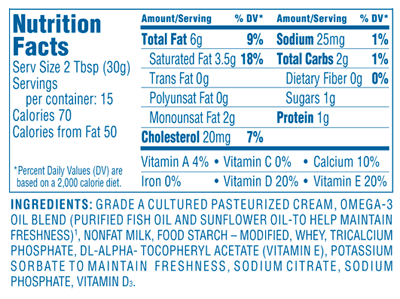40 food labels low fat
Food Packaging Claims | American Heart Association If a food claims to be …. It means that one serving* contains …. Fat free. Less than 0.5 g fat and no ingredient that is fat. Low fat. 3 g of fat or less (and not more than 30% of calories from fat for meals and main dishes) Reduced fat or less fat. At least 25% less fat than the regular product. Low in saturated fat. Reading Food Labels | ADA - American Diabetes Association Put food labels to work. The Nutrition Facts labels on foods are really the key to making the best choices. We'll cover the basics so that these labels make shopping easier for you. You've heard it all. From carb-free to low-carb, to whole and empty carbs, it's hard to know what it all means. Blood sugar highs and lows aren't always ...
What does low fat, light mean on a food label? - Common Health Myths The term "light" does not always mean a reduction in fat, but can also be a reduction in sugar and/or salt. One of the biggest challenges with "light" food choices are that people tend to consume more of them. A study published in ResearchGate shows that low-fat nutrition labels increase food intake by increasing perceptions of the ...

Food labels low fat
Low Fat Nutrient Content Claim - LabelCalc In fact, a recent global study of healthy eating habits reported that 25% of North Americans felt that a "low-fat" label was very important to them when deciding whether to purchase a food product. Furthermore, 59% of North Americans reported that reducing their fat intake was a strategy they used to lose weight. Food labels - NHS How do I know if a food is high in fat, saturated fat, sugar or salt? There are guidelines to tell you if a food is high in fat, saturated fat, salt, sugar or not. These are: Total fat. High: more than 17.5g of fat per 100g Low: 3g of fat or less per 100g. Saturated fat. High: more than 5g of saturated fat per 100g Low: 1.5g of saturated fat or ... The Scam Behind Low Fat Food Labels - Labrada The best way to show you the low fat food label scam is through an example. Let's say that you have a food that claims to be 99% fat free on the label. But what does that really mean? As Keith rightfully explains, all it means is that by weight, the food is 99% fat free. However, let's say that the hypothetical food contains 50 calories and ...
Food labels low fat. PDF Food Label Tip: How to Choose Foods Low In Saturated Fat, Trans Fat ... Compare food labels of similar products and choose the ones with the lowest % Daily Value* of saturated fat and cholesterol. In general, 5% or less is low. Twenty % or more is high. Also choose foods with no or low amounts of trans fat. Compare these two food labels: Whole Milk Fat-Free Milk. Ft e. These food labels are for one serving of milk ... Don't Be Fooled By Low-Fat Food Labels - SuperFoodsRx The "reduced-fat" label means just that - reduced fat. Not low-fat. For a product to be labeled "reduced-fat" it must be 25% less fat than the regular version. There are some reduced-fat products that have 35% or even 60% less fat than the original, but the food companies proudly list this on the front of their packages as though this ... 13 Misleading Food Label Claims and How Not to Be Tricked 1. Label Says "Sugar-Free". The Food and Drug Administration (FDA) provides guidelines for a variety of common food labels, including sugar-free. While the term suggests that products labeled this way would be completely free of sugar, they can actually contain up to 0.5 grams of sugar in a single serving size. Food Labels | CDC All the numbers on this label are for a 2/3-cup serving. This package has 8 servings. If you eat the whole thing, you are eating 8 times the amount of calories, carbs, fat, etc., shown on the label. Total Carbohydrate shows you types of carbs in the food, including sugar and fiber. Choose foods with more fiber, vitamins, and minerals.
How To Read Food and Beverage Labels - National Institute on Aging Reading food labels can help you make smart food choices. Learn how to read and understand the product date, ingredient list, and Nutrition Facts label. ... Low-fat, low-calorie, low-carb. These foods have a legal limit to how many calories, grams of fat, or carbohydrates (carbs) they can contain per serving. However, if a serving size is very ... How to Understand and Use the Nutrition Facts Label | FDA Overview. The information in the main or top section (see #1-4) of the sample nutrition label (below) can vary with each food and beverage product; it contains product-specific information ... How to not be tricked by misleading vegan-linked food labels and terms Foods that are specified to be low- or reduced-fat only need to be 25% lower than the original product. This means a product could claim to be low in saturated fat but still have significantly high levels compared to another brand. With "low-calorie", it's even worse, as it just needs to be fewer calories generally. Never Eat Anything With These Food Labels - Eat This Not That For example, one of the most common "health" food package labels you'll see is "low-fat" or "fat-free." While this may be true, it's important to keep in mind that the absence or reduction of fat usually means the presence of way too much added sugar.Manufacturers know they must make low-fat foods palatable in some way, so they add tons of unhealthy sugar to make you enjoy the product (and ...
Food Labeling & Nutrition | FDA Food labeling is required for most prepared foods, such as breads, cereals, canned and frozen foods, snacks, desserts, drinks, etc. Nutrition labeling for raw produce (fruits and vegetables) and ... Understanding Food Terms - American Cancer Society Low. How you might see it on a label: low-fat, low-sodium, low-cholesterol, low-calorie What it means: This term can be used on foods that can be eaten often and you still won't get more than the recommended amount of that nutrient. The nutrients that can be described with this label are: Fat; Saturated fat; Cholesterol; Sodium (salt) Reading Food Labels (for Parents) - Nemours KidsHealth Percent daily value is most useful for seeing whether a food is high or low in nutrients: A food with 5% or less of a nutrient is low in that nutrient. A food with 10%-19% of a nutrient is a good source of that nutrient. A food with 20% or more of a nutrient is high in that nutrient. The information on food labels is based on an average diet ... Food Labels: What does the 'low fat' label actually mean? What to look for on the nutrition panel. In terms of total fat, look for less than 10g per 100g. For milk and yoghurt, choose products with less than 2g total fat per 100g, and for cheese ...
Food Labels: How to Decode the 11 Trickiest Terms Labels not only brag about a food's low levels of bad stuff but also boast about a food's high levels of good stuff. ... Foods bearing this label meet the low standard for fat and saturated ...
Understanding Food Nutrition Labels | American Heart Association Remember that the information shown in the label is based on a diet of 2,000 calories a day. You may need less or more than 2,000 calories depending upon your age, gender, activity level, and whether you're trying to lose, gain or maintain your weight. When the Nutrition Facts label says a food contains "0 g" of trans fat, but includes ...
How to Read Food Labels for a Heart-Healthy Diet The lower the net carbs, the better." Berries: "I usually choose blueberries, which are anti-inflammatory and not as high in sugar as bananas.". Yogurt: "I choose a low-fat brand that's marketed as 'diabetes friendly' on the label, which means it's low in carbohydrates. You get all the benefit of yogurt with far fewer carbs.

Post a Comment for "40 food labels low fat"